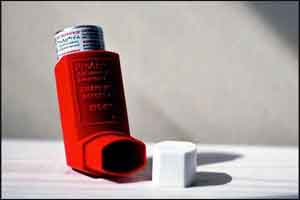- Home
- Editorial
- News
- Practice Guidelines
- Anesthesiology Guidelines
- Cancer Guidelines
- Cardiac Sciences Guidelines
- Critical Care Guidelines
- Dentistry Guidelines
- Dermatology Guidelines
- Diabetes and Endo Guidelines
- Diagnostics Guidelines
- ENT Guidelines
- Featured Practice Guidelines
- Gastroenterology Guidelines
- Geriatrics Guidelines
- Medicine Guidelines
- Nephrology Guidelines
- Neurosciences Guidelines
- Obs and Gynae Guidelines
- Ophthalmology Guidelines
- Orthopaedics Guidelines
- Paediatrics Guidelines
- Psychiatry Guidelines
- Pulmonology Guidelines
- Radiology Guidelines
- Surgery Guidelines
- Urology Guidelines
New inhalable antibody developed to prevent allergy and asthma in adults

In a breakthrough Research a new inhalable antibody has been developed which can prevent allergic reactions and asthma in adults through a unique mechanism. There have been disturbing and rising trends of Allergy and Asthma globally and this breakthrough finding could pave way for a far more effective management of allergic diseases.The antibody blocks the immune effect behind allergic reactions by preventing human allergy antibody (IgE) from attaching to cells.
"We can now describe the interaction of this antibody with its target and the conformational changes very accurately. This allows us to understand, how it interferes with the IgE and its specific receptors on the immune cells of the body, which are responsible for releasing histamine in an allergic reaction," said Edzard Spillner, Associate Professor at the Aarhus University.
When exposed to external allergens, an allergic person produces high levels of IgE molecules.
The function of the antibody is that it interferes with binding of IgE to the two specific effector (CD23 and FceRI) on the immune cells, thereby making it impossible for the allergy molecule to bind.
Furthermore, the researchers have observed that the antibody also removes the IgE molecules even after binding to its receptors.
"Once the IgE on immune cells can be eliminated, it doesn't matter that the body produces millions of allergen-specific IgE molecules. When we can remove the trigger, the allergic reaction and symptoms will not occur," Spillner said.
In the laboratory, it took only 15 minutes to disrupt the interaction between the allergy molecules and the immune cells.
The researchers have conducted ex vivo experiments with blood cells from patients allergic to birch pollen and insect venom. However, the method can be transferred to virtually all other allergies and asthma, they said.
Because of its chemical structure, the new antibody might be inhaled or swallowed, and these new consumption methods will make easy, cheap and much and more comfortable for the patients to handle.
"It is a so called single domain antibody which easily produced in processes using only microorganisms. It is also extremely stable, and this provides new opportunities for how the antibody can be administered to patients," Spillner said.

Disclaimer: This site is primarily intended for healthcare professionals. Any content/information on this website does not replace the advice of medical and/or health professionals and should not be construed as medical/diagnostic advice/endorsement or prescription. Use of this site is subject to our terms of use, privacy policy, advertisement policy. © 2020 Minerva Medical Treatment Pvt Ltd